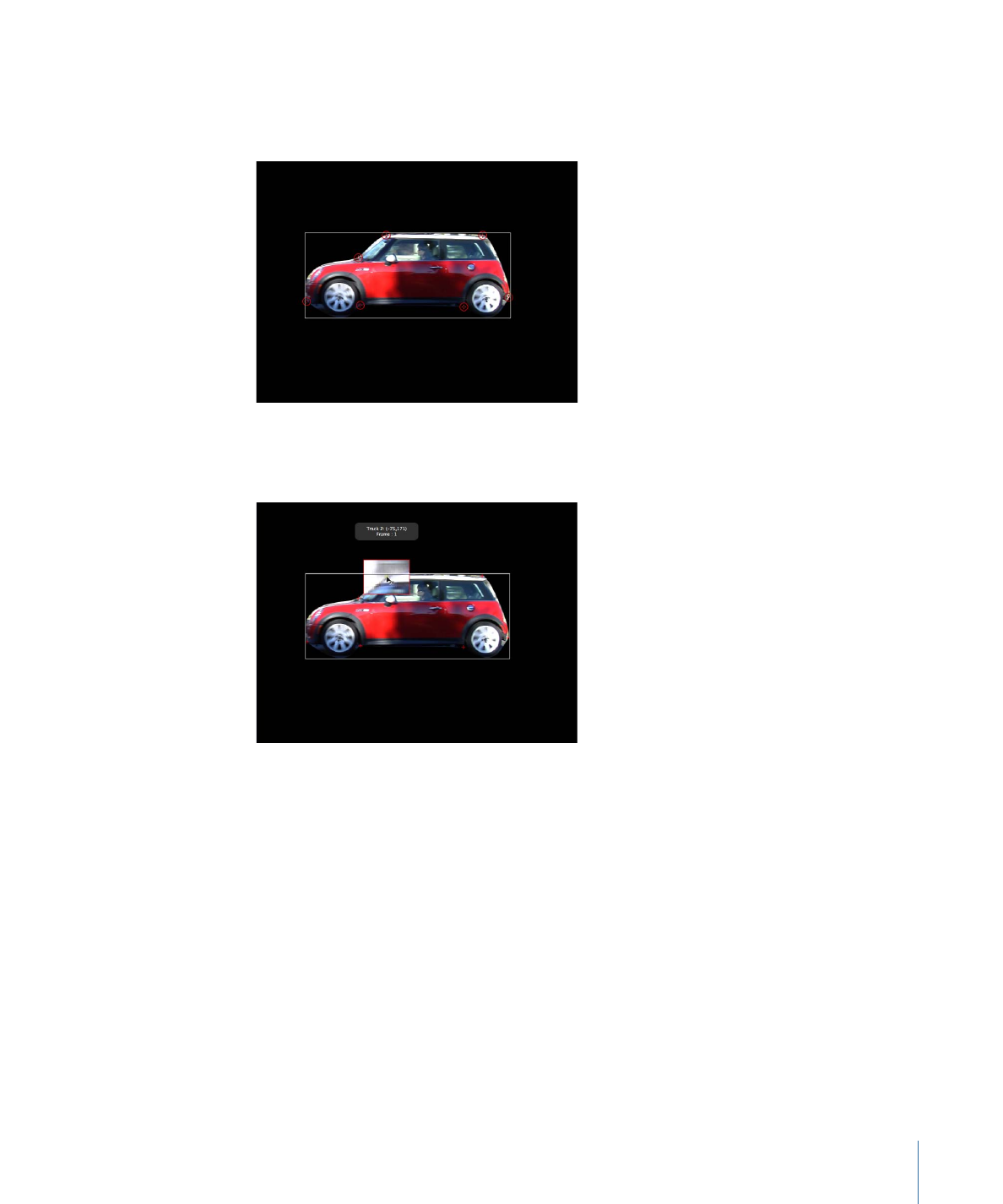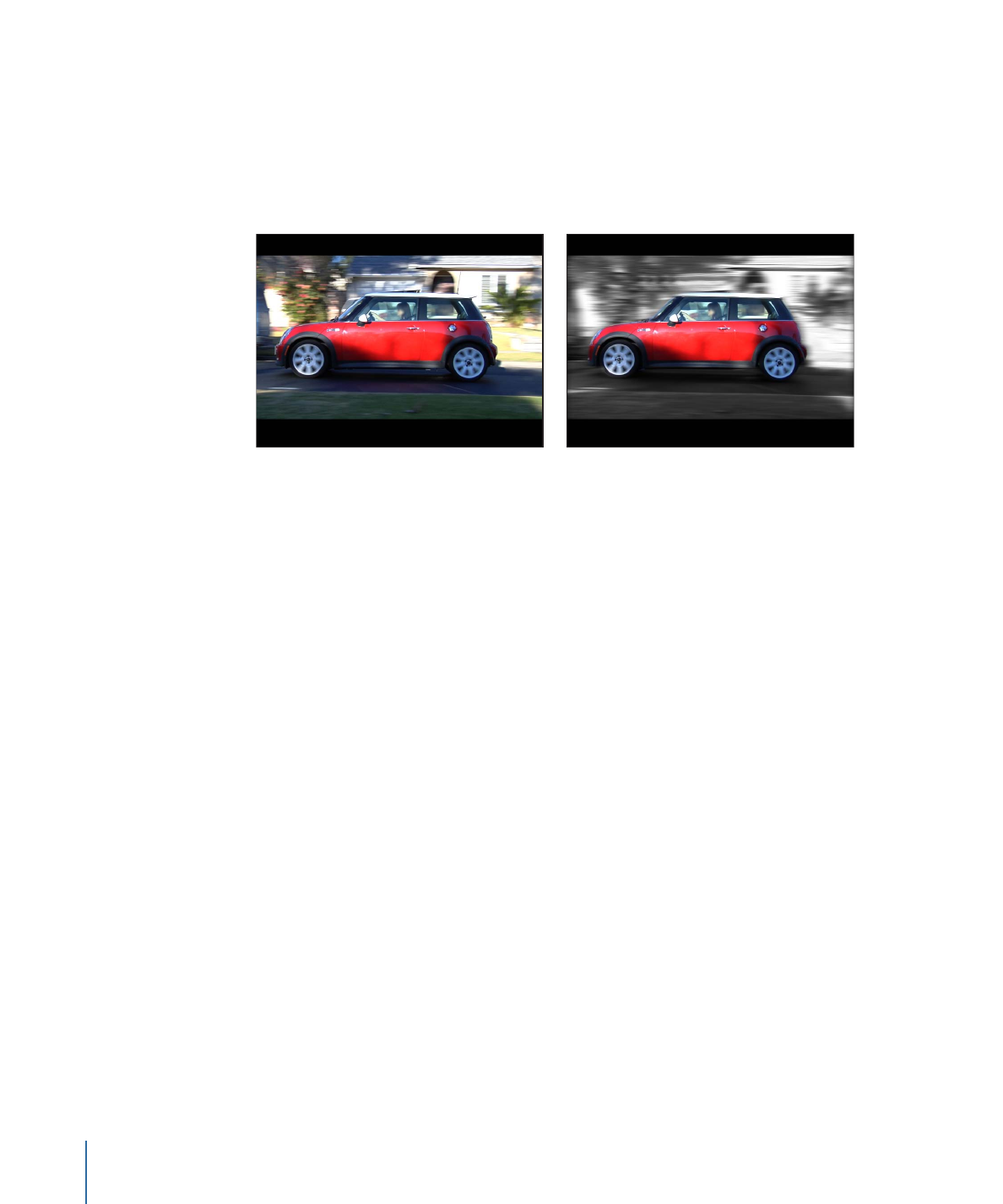
Tracking Control Points to a Clip
This section provides a brief overview of using the Track Points behavior to track the
vertices of a shape or mask to a clip. In the following example, the Track Points behavior
is applied to a loose mask of seven control points isolating a car in a background clip.
To track a mask using the Track Points behavior
1
With a background clip visible in the Canvas, use a mask tool to isolate part of the
background clip.
For more information on working with masks, see
Masking a Layer or Group
.
2
Select the mask object, then choose Shape > Track Points from the Add Behavior pop-up
menu in the toolbar.
1314
Chapter 22
Motion Tracking

The behavior is added to the mask object, and trackers appear for each control point on
the shape. The trackers are ordered in the same order that the shape was drawn: Control
Point 1 is Track 1, Control Point 2 is Track 2, and so on.
3
Drag the trackers to fine-tune their position on the reference patterns.
As you drag, a magnified inset view of the area around the tracker appears.
4
To disable a tracker, deselect its checkbox in the Behaviors Inspector.
Note: Control points without an associated tracker are not modified.
5
Click the Analyze button in the HUD or Behaviors Inspector.
The mask control points are tracked to the reference patterns.
1315
Chapter 22
Motion Tracking

In this example, a mask is tracked to a moving car so the car can be isolated from the rest
of the clip. The illustration on the left shows the original unmodified clip. In the illustration
on the right, the tracked mask isolates the car (and can be seen as the desaturated
background), allowing separate effects to be applied to the car and its background even
though they are part of the same image. The mask protects the car from the effects of
the heavy blur and desaturation.
As with all behaviors, you can drag or copy (Option-drag) a Track Points behavior to a
new shape in the Layers list. When you apply the behavior to a new shape, the trackers
are applied to the control points of the new shape. If the new shape has more control
points than the originally tracked shape, only the original track points are applied. For
example, if the originally tracked shape has three control points, and the new shape has
five control points, trackers are applied to the first three control points of the new shape.
If the new shape has fewer control points than the originally tracked shape, trackers are
applied to the existing points on the new shape.
Note: Paint strokes usually have a large number of control points. Simplify a paint stroke
by deleting or disabling control points before applying a Track Points behavior to the
stroke. To track the stroke as a whole, rather than by its control points, use the Match
Move behavior.